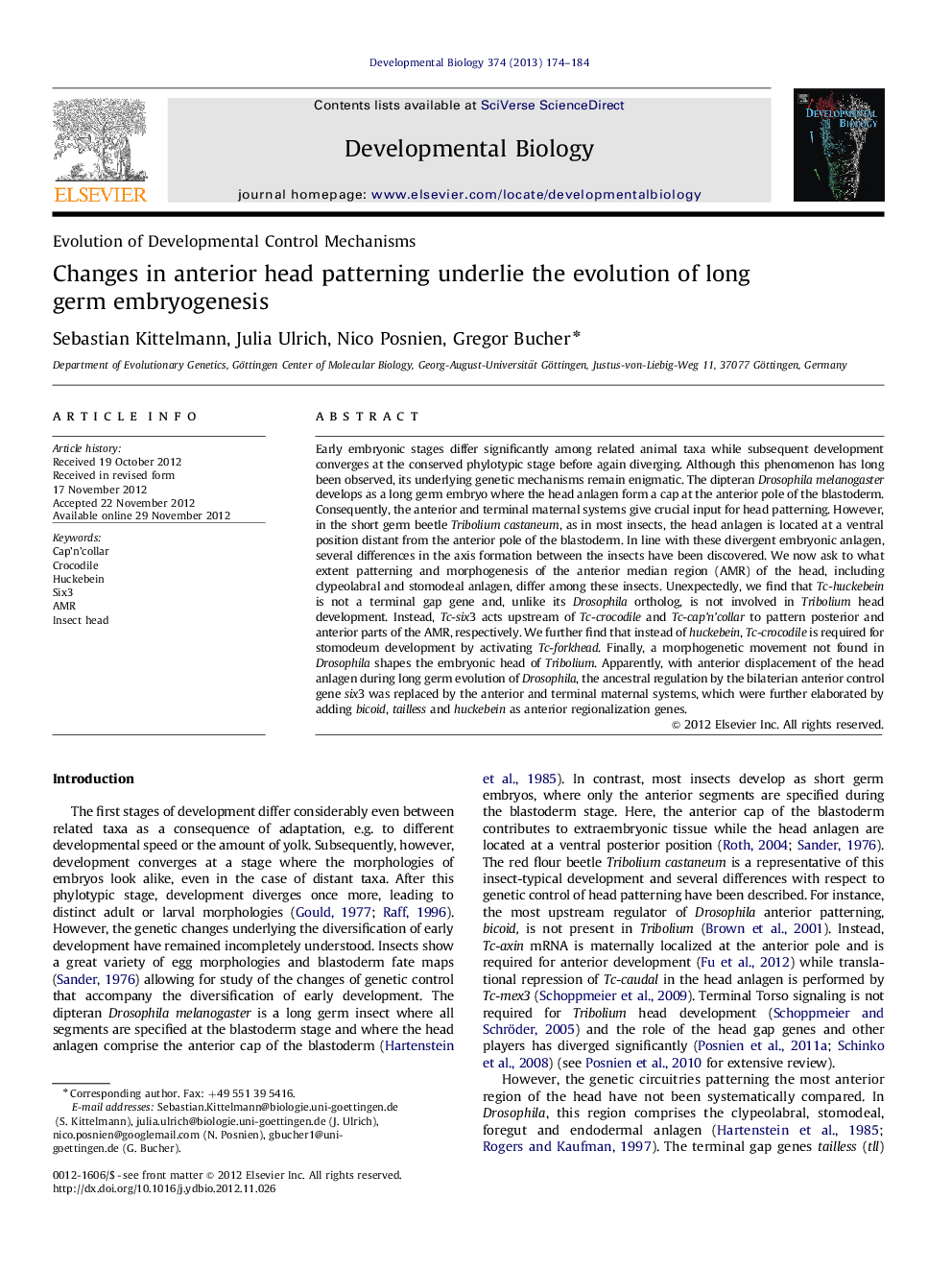| Article ID | Journal | Published Year | Pages | File Type |
|---|---|---|---|---|
| 2173120 | Developmental Biology | 2013 | 11 Pages |
Early embryonic stages differ significantly among related animal taxa while subsequent development converges at the conserved phylotypic stage before again diverging. Although this phenomenon has long been observed, its underlying genetic mechanisms remain enigmatic. The dipteran Drosophila melanogaster develops as a long germ embryo where the head anlagen form a cap at the anterior pole of the blastoderm. Consequently, the anterior and terminal maternal systems give crucial input for head patterning. However, in the short germ beetle Tribolium castaneum, as in most insects, the head anlagen is located at a ventral position distant from the anterior pole of the blastoderm. In line with these divergent embryonic anlagen, several differences in the axis formation between the insects have been discovered. We now ask to what extent patterning and morphogenesis of the anterior median region (AMR) of the head, including clypeolabral and stomodeal anlagen, differ among these insects. Unexpectedly, we find that Tc-huckebein is not a terminal gap gene and, unlike its Drosophila ortholog, is not involved in Tribolium head development. Instead, Tc-six3 acts upstream of Tc-crocodile and Tc-cap'n'collar to pattern posterior and anterior parts of the AMR, respectively. We further find that instead of huckebein, Tc-crocodile is required for stomodeum development by activating Tc-forkhead. Finally, a morphogenetic movement not found in Drosophila shapes the embryonic head of Tribolium. Apparently, with anterior displacement of the head anlagen during long germ evolution of Drosophila, the ancestral regulation by the bilaterian anterior control gene six3 was replaced by the anterior and terminal maternal systems, which were further elaborated by adding bicoid, tailless and huckebein as anterior regionalization genes.
Graphical AbstractFigure optionsDownload full-size imageDownload high-quality image (335 K)Download as PowerPoint slideHighlights► Cap'n'collar and crocodile pattern the anterior median region of the head (AMR). ► A morphogenetic backfolding displaces anterior cells to a subterminal position. ► Huckebein does not act as terminal gap gene in Tribolium. ► Bicoid and terminal gap genes have replaced six3 as ancestral regulator of the AMR. ► Crocodile was replaced by huckebein in the control of forkhead.
